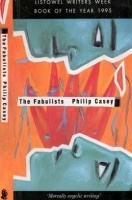India’s party system has been under flux, transformation and reconfiguration since the end of the 1980s. By the time the sun set on the twentieth century, the party system in India had developed a plurality of national and regional levels and following several experiences in fits and starts, coalition making among the parties too stabilized at the national level. The dawn of twenty first century thus witnessed a federalized party system in place, where coalition making and cohabitation amongst the parties stabilized at both national and regional levels. As a result, since 1999 India has had two completing governments completing their full term at the national level; the third, UPA II, has completed four years, and despite hiccups is likely to complete its full term till mid-2013. However, the party system in the country has turned competitive and several trajectories of alternation are being attempted by parties and leaders, making the emerging political situation fluid.
This book Useful for Leisure Read.
1. Introduction
2. India’s Party System: Emerging Trajectories
3. All Parties Look Virtually the Same: A note on the Governmentalisation of Parties
4. Middle Classes, Parties and Electoral Politics in India
5. Party System and Democracy in India: Distinctive Features at the National, State and Local Level
6. Political Parties’ Manifestoes and Narratives of the Public in India
7. Political Parties and Foreign Policy
8. The New Party System: Federalised and Binodal
9. Do the Major National Parties Function Federally?
10. Smaller States, Political Economy and Parties
11. Party Dynamics in a Border Region: Meeting the Political Challenges of India’s N-E Hill States
12. Hurling of the Shoe: The Changing Political Culture of Indian Political Parties
13. Representation of Marginalized Sections and Indian Political Parties
14. India’s Political Dynasties
15. Generational Change in Political Parties and the Party System
16. Globalisation, Social Movements and Political Parties
17. Political Parties and the Indian Diaspora
18. Politics, Parties and New Media Technology


















